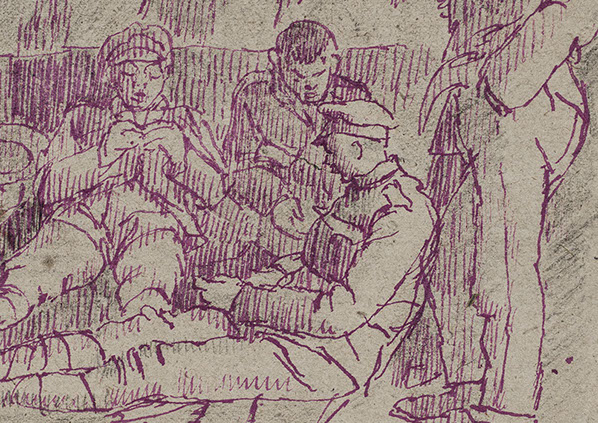Drawing was the foundation of everything Mackinlay did as an artist. His sketches show that he drew with great fluency, rarely hesitating, with the ability to simplify, and make the greatest impact with the fewest strokes. He was a true all-rounder, able to record figures at rest and in action. In his magazine illustrations, the use of unusual angles, a figure seen from behind, from above, from below, all heighten the dramatic tension of the incident depicted. Sometimes these were sketched from a model (usually one of his family), but in many cases Mackinlay relied on memory or imagination.
The expression of movement seems to come naturally to him, and made him such a popular choice for adventure stories, where the figures are riding, sailing, flying, climbing and getting into situations which stretch the faculties of the reader to the limit; that’s the moment when a picture by Mackinlay makes everything crystal clear.
Stories create moments of heightened emotion, and Mackinlay was able to put a vast range of different expressions on the faces of his characters. These were not just men and women, children and old people; as the global reach of British fiction in the Imperial age demanded, he drew figures of all races and backgrounds with the same apparent ease and conviction.
Mackinlay’s Australian background, and early experience of the life of the bushman, gave him a real understanding in drawing horses. With the help of an illustrated encyclopaedia, there was no member of the animal kingdom he could not, and did not, depict when called upon, from elephant or crocodile to wolf or camel.
Timothy Wilcox

Red Pen Soldier Sketch
1918, 10.5 x 15.5cm, red pen on paper
